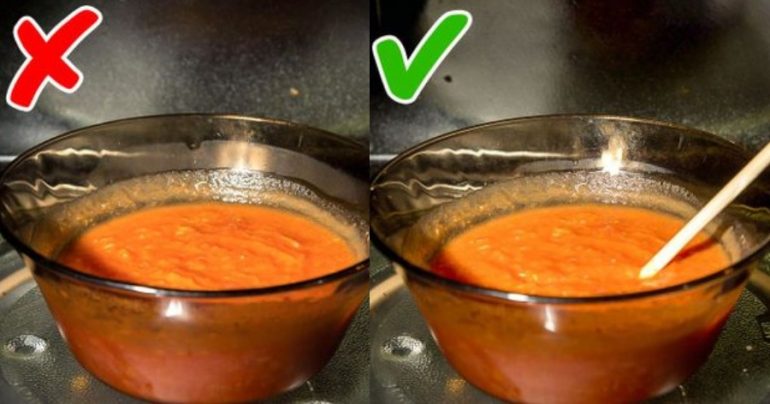The microwave oven is a wonderful device that saves us valuable time. The food heats up faster in it than in the electric stove or oven and you do not need to control the process. You just select the function, set the timer and you can wait for your next meal. However, not all foods are microwave friendly. Some of them can get worse during the cooking process, while others can form substances harmful to our health.
We have come up with a list of products for which the microwave oven has negative effects. And as a bonus, we will share a list of little kitchen tricks for this home appliance.
Meat, fish and poultry

- Processed meats contain preservatives and when exposed to electromagnetic radiation, they secrete dangerous chemicals such as oxidized cholesterol.
- The crispy crust of the fried chicken turns into a wet, unpleasant coating in the microwave and the meat itself is heated unevenly.
- Anyone who has ever tried to heat a fish in the microwave remembers the event with great displeasure. For one thing, the whole kitchen space is filled with a "not so pleasant" smell. Second, the fish turns into something inedible. For example, if you reheat the salmon in the microwave, the food will lose all moisture, dry out and harden.
Some vegetables, fruits and mushrooms
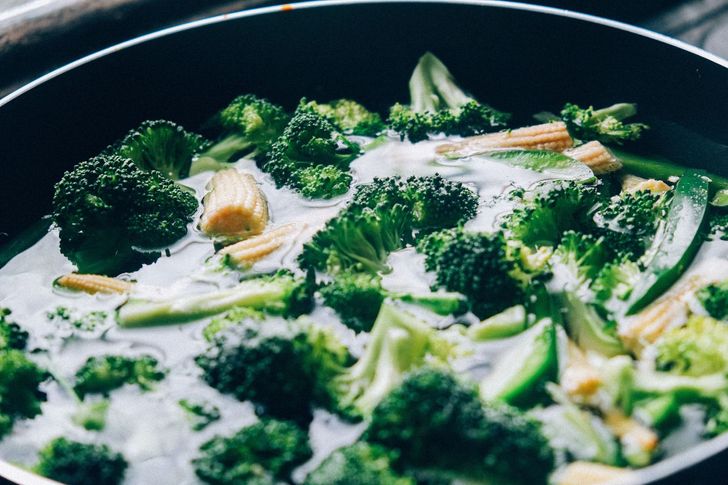
- In the microwave, broccoli loses most of its beneficial properties. It is better to steam it. This will preserve the flavor of the product and most of the vitamins and minerals.
- Greens (such as beet leaves) have certain characteristics that can catch fire when processed in the microwave. As a result, instead of a tasty meal, burnt food will end up on your table and household appliances will also spoil.
- Electromagnetic radiation activates the formation of harmful nitrosamines in spinach and beets. These substances can be carcinogenic.
- Capsaicin, which is found in hot peppers and gives them their intense hotness, begins to evaporate when the peppers are cooked in the microwave. Once the microwave oven door is opened, the room will be filled with a strong smell of smoke.
- Fresh grapes and gooseberries are turned into plasma pieces in the microwave - a spectacular but dangerous experiment.
Pizza, Chinese food and rice
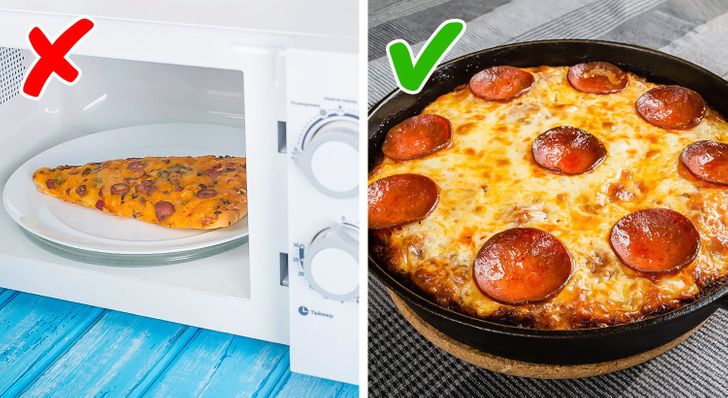
- It is hard to imagine a dish more immune than a pizza that has been heated in the microwave. The crispy edges turn into something wet and sticky, and the cheese hardens like concrete and has a rubbery texture. There is nothing harmful in this food, but you will not get any pleasure while eating it. It is best to reheat the dish in a hot pan or oven at high temperature.
- Do not put food in the microwave in the same containers as they were delivered. Cardboard boxes often contain hazardous materials such as glue, ink, wax, plastic or metal and can ignite a large fire in your home.
- Chinese food retains its flavor and charm, even when it is cold. These dishes can be reheated if you want, but do not do it in the microwave. The problem lies in the ingredients themselves. The microwave turns this delicious food into something slimy, moist and immune.
- Rice in the microwave always leads to unpredictable results. If the rice has been stored at room temperature for a long time or has been refrigerated for more than a day, it is best to throw it away. Rice grains contain the bacterium Bacillus cereus, which can remain in food after its initial preparation. The microwave does not raise the temperature high enough to kill these pathogens and can lead to severe poisoning. The same goes for many foods that contain starch.
Liquids, oils and thick soups
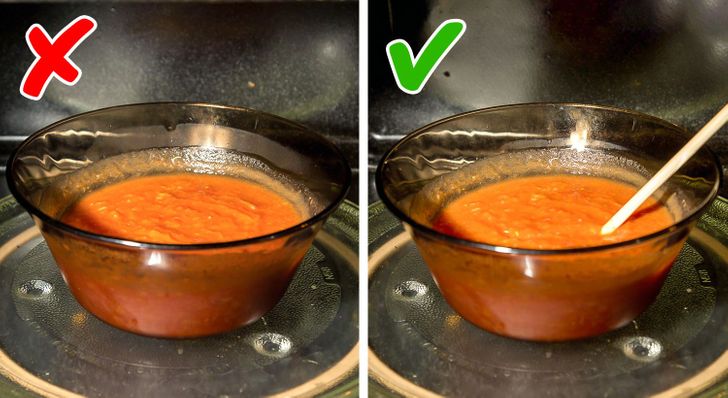
- Watery soup can be heated in the microwave without any problems. However, the thick soup, puree type, is a completely different story. After a while, the dish will start exploding with fireworks from soup drops that will be released into the appliance. This is because the liquid in the heater is unevenly heated. To avoid this effect, stir the soup every minute. You can also put a wooden spoon or a stick in the soup bowl.
- The microwave oven completely destroys the taste of coffee. No harmful substances are created in the drink, but only those who love bitter and sour tastes can enjoy it. If you really want to drink the whole cup of your favorite cold drink, you just have to add ice to it.
- Baby cream, baby food and breast milk are not heated evenly in the microwave. Thus, hot spots can appear in the fluid and possibly burn the baby's tongue, mouth or throat.
- Plain water in a cup can also surprise you. In a microwave oven, the temperature of the liquid rises, but the bubbles that accompany the boiling process do not always appear on the surface.
- If you put a tea bag or spoon in the water, the liquid will boil immediately and the cup may explode.
- Various oils, such as olive oil, canola or sesame oil, are not liquids but fats. So the oil in the microwave will simply not heat up to the required temperature.
Bonus: The magic microwave
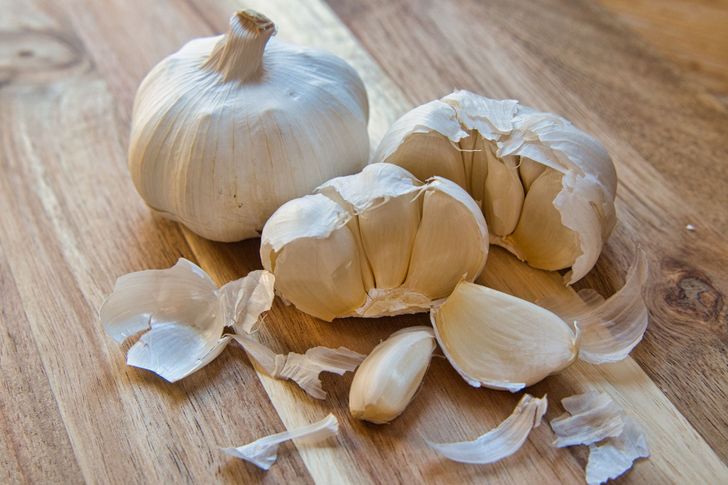 While you have thoroughly researched the whole list of products that should not be heated in the microwave, you do not necessarily need to get rid of this home appliance. The microwave oven is a useful device and can be used for completely unexpected purposes.
While you have thoroughly researched the whole list of products that should not be heated in the microwave, you do not necessarily need to get rid of this home appliance. The microwave oven is a useful device and can be used for completely unexpected purposes.
- Peels the garlic quickly: In order not to suffer while removing the peels from a clove of garlic, you just need to put the garlic in the microwave for 15-20 seconds.
- Preparation of fresh juice: If you put oranges or lemons in the microwave for 10-20 seconds, it will be much easier to squeeze them. Radiation destroys the inner membranes of citrus fruits.
- Frying of seeds and nuts: Put these products in a ceramic pot in the microwave, add a drop of oil and place them in the microwave. It takes 3 minutes to cook seeds and nuts.
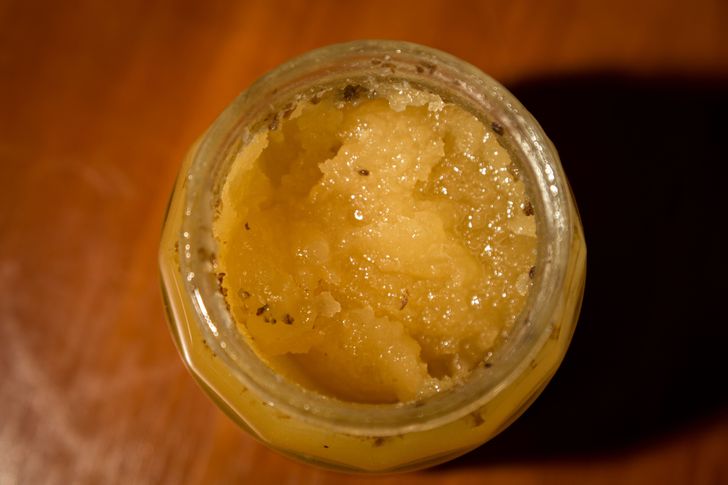
- Peeling vegetables: Sometimes, zucchini or radishes are difficult to peel. To speed up the peeling process, just leave the vegetables in the microwave for 2-3 minutes, setting it to the lowest mode. After that, it will be much easier to remove the skin.
- Chopping onions: To avoid unnecessary tears, keep the onion in the microwave for just 45 seconds. This will destroy the enzymes responsible for producing corrosive gas, which irritates the eyes.
- Whip milk to make foam: You can make a cappuccino without an expensive coffee maker. To do this, put the milk in a glass or ceramic jar with a lid that can be closed (it must be half full) and shake vigorously. It takes 30 or 60 seconds for the milk to turn to foam. Then place the jar in the microwave for another 30 seconds and watch the foam rise. Just add it to the coffee and the cappuccino is ready.

- Experts recommend heating each dish only once. The longer the food is stored, the greater the risk of developing harmful microorganisms and bacteria. Properly prepared, food will not harm your health. But you need to buy a kitchen thermometer to measure the temperatures of the dishes after the heat treatment. Also, mix the food well so that there are no places with cold ingredients - they can become breeding ground for bacteria. The more often you heat the food, the less delicious it becomes - the vegetables turn into porridge and the meat becomes elastic.
via
